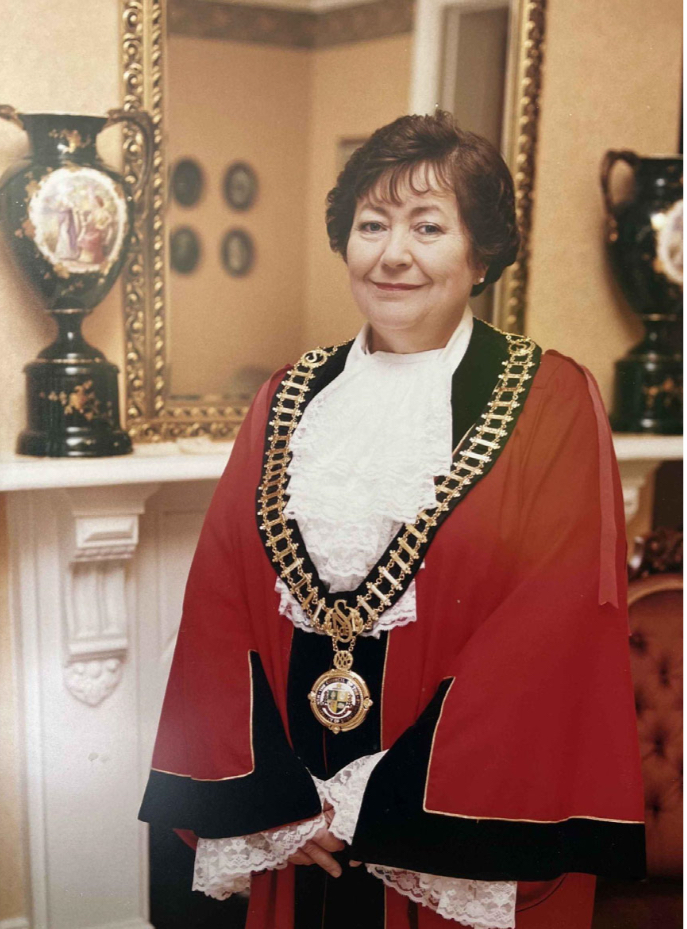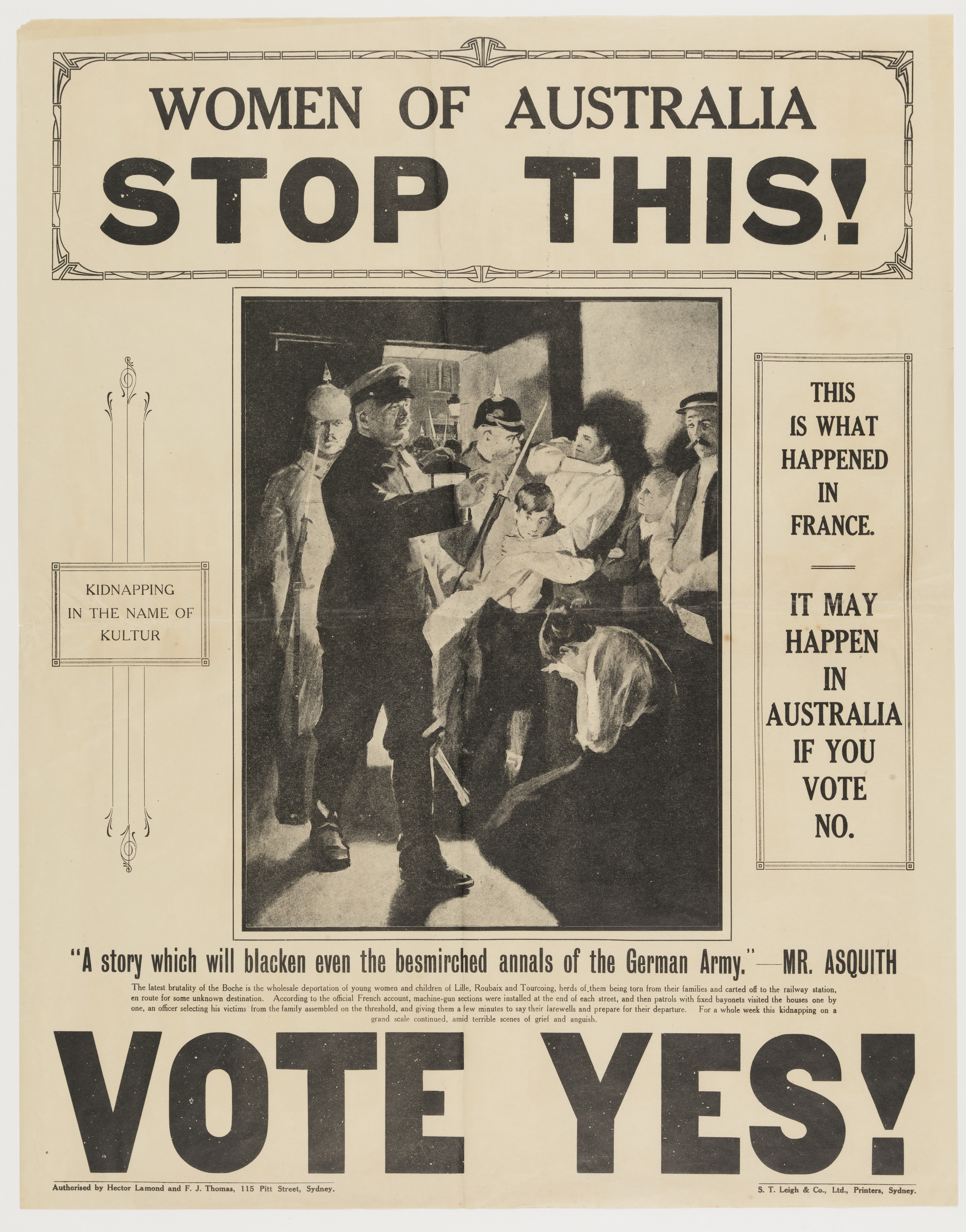SHDHS Newsletter Vol.5 Issue 5 September-Oct 2023 – Laurel O’Toole
The September-October 2023 Newsletter for the Strathfield-Homebush District Historical Society is dedicated to the late Laurel O’Toole.

SHDHS Newsletter Vol.5 Issue 5 September-Oct 2023 – Laurel O’Toole
The September-October 2023 Newsletter for the Strathfield-Homebush District Historical Society is dedicated to the late Laurel O’Toole.


ANZAC Day is commemorated on 25th April each year. It marks the anniversary of the first major military action fought by Australian and New Zealand forces during World War 1. This March-April 2023 SHDHS newsletter features an essay by Cathy Jones discussing the impact of the World War 1 in the Strathfield district, particularly enlistment and the Conscription Referendums of 1916 and 1917.
An excerpt from the Newsletter:
“With the outbreak of World War 1 in 1914, recruitment of men and women to serve in the Australian Imperial Forces was on a voluntary basis only. Despite intense and divisive campaigns in Australia to introduce conscription to allow compulsory overseas military service, only Australia, South Africa, and India of the countries participating in the conflict did not introduce conscription during World War I.
The proposal to introduce conscription provoked furious debate within the Australian and local community. Both pro and anti-conscription meetings were held in Strathfield, Homebush and Enfield. Meetings and rallies for and against conscription were held in Strathfield prior to the 1916 plebiscite. An anti-conscription meeting was held in Strathfield on 19 October 1916. However, meetings and rallies against conscription appear to be out-numbered by those supporting conscription.
A pro-conscription meeting was held on Wednesday 11 October 1916 at Homebush at Railway Station near A G Ball’s Chemist Shop with Sgt Morehouse and W A Windeyer , at Enfield (opposite Ireland’s Hotel) with W E V Robson MLA and Alexander Ralston. A large pro-conscription gathering was held at the Strathfield Melba Picture Show on October 1916 with the key speaker former Prime Minister Joseph Cook and Alexander G Ralston, barrister. Cook in his address argued for the need of conscription to recruit sufficient men to win the war. Alderman John Price of Strathfield Council told the gathering that the ‘said question to be decided was whether ……we were going to place Australia on a pinnacle of fame, or whether we should be disgraced forever among the nations’.

The referendum question on 28 October 1916, asked the nation ‘Are you in favour of the government having in this grave emergency, the same compulsory powers over citizens in regard to requiring their military service, for the term of this war, outside the Commonwealth, as it now has in regard to military service within the Commonwealth?’
In 1916, the areas of Strathfield and Homebush were located in the Homebush sub-division of the Electorate of Nepean. Polling booths were located at Flemington Public School, Homebush Public School, South Strathfield Public School and a temporary structure in Redmyre Road near The Boulevarde . While the Yes vote in the Nepean Electorate lost by a majority of 4272, the Homebush sub-division which included Strathfield defied the trend across the electorate and voted Yes (63%) for the referendum. The Yes vote in the Homebush subdivision was the highest in the Nepean electorate .
 Enfield and Burwood were sub-divisions of the Electorate of Parkes in the 1916 Referendum. Polling booths were located at Enfield Council Chambers, Croydon Public School, Burwood Public School and Milham’s Hall, Water St, West Enfield .
Enfield and Burwood were sub-divisions of the Electorate of Parkes in the 1916 Referendum. Polling booths were located at Enfield Council Chambers, Croydon Public School, Burwood Public School and Milham’s Hall, Water St, West Enfield .
The results of the 1916 plebiscite were very close. 51.6% of the population voted against conscription and 48.4% for it. New South Wales returned majorities against and without a majority of states, the referendum was defeated.
In the ensuing political fall-out, the Labor Party split and Hughes formed a new political party called the Nationalist Party from the pro-conscriptionist Labor members. The Labor Party was severely divided on the issue and split within weeks of the ballot. After leaving the party, Prime Minister Hughes and other pro-conscription supporters created the ‘National Labor Party’, which was in competition with the Labor Party.
Enlistment numbers continued to fall, and in 1917 Hughes called for a second referendum for 20 December 1917. The second referendum also failed to pass.
The debates concerning the second referendum were ‘vindictive and vicious’ following the aftermath of the great strikes in August and September 1917 and Third Battle of Ypres . Hughes increased restrictions on reporting of anti-conscriptionist meetings, but ordered censors not to interfere with pro-conscriptionist reporting in the Sydney Morning Herald . The ‘Yes’ campaign was strongly supported by Hughes and his political supporters, most Church and business leaders, and most newspapers . Many in the ‘Yes’ camp hysterically portrayed anti-conscriptionists as the ‘enemy within’ .
The ‘No’ camp centred on the labour movement, many arguing that conscripting more men from Australia would have negligible impact on the fighting abroad and the final result . While the union movement were short of funds after the recent strikes, the ‘no’ campaign was well organised based on its experience from the 1916 campaign.
SHDHS Newsletter Vol.5 Issue 2 March-April 2023 – WWI and Conscription Strathfield area
If you wish to receive newsletters, access to our archives and other benefits, please consider joining the Society
The Strathfield-Homebush District Historical Society has installed historic plaques throughout Strathfield to commemorate historical places. These plaques were installed by the Historical Society:
The World War I exhibition at Strathfield Library closes on 20 June 2021. Thanks to everyone who visited or attended the talks. If you haven’t seen the exhibition, catch it before it closes. This page features some images from the exhibition, featuring some items from the collection of the Strathfield-Homebush District Historical Society.







Strathfield-Homebush District Historical Society has collaborated with Strathfield Council in preparing a new exhibition.
Strathfield Answers the Call 1914-1918 explores how the people of Strathfield and Homebush participated in the events of WWI on the battlefront and at home.
This exhibition shares the stories from the Strathfield and Homebush district in supporting a war fought far from home.
Learn about the sacrifices of those who fought, the efforts of those at home and the issues that united and divided communities.
When: 23 April – 20 June 2021 (during Strathfield Council Library & Innovation Hub opening hours)
Where: Ironbark Gallery – Strathfield Council Library & Innovation Hub, Rochester Street Homebush
You are invited to discover the many stories of those who answered the call by attending two historical talks at the Ironbark Gallery:
Registrations are essential and can be made by clicking on the above links.
Strathfield Council recently requested the Strathfield-Homebush District Historical Society provide comments on a proposal to relocate the Homebush War Memorial from its current location. The Society does not support this proposal. The submission to Council was sent on 3 September 2019.
Doreen Rich, a long term resident of Strathfield and former President of the Strathfield District Historical Society passed away on July 31, 2019. She more recently was living near Taree NSW. Doreen invested significant time and effort into recording and conserving Strathfield’s history and served for many years as the Society’s President. Condolences are extended to her many friends and family at this sad time.
